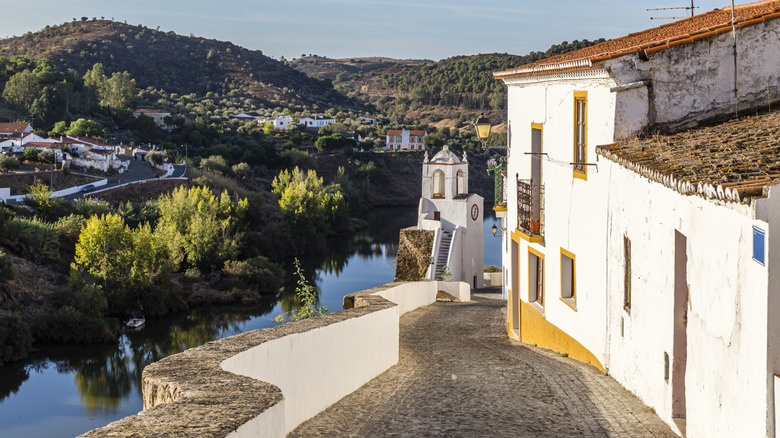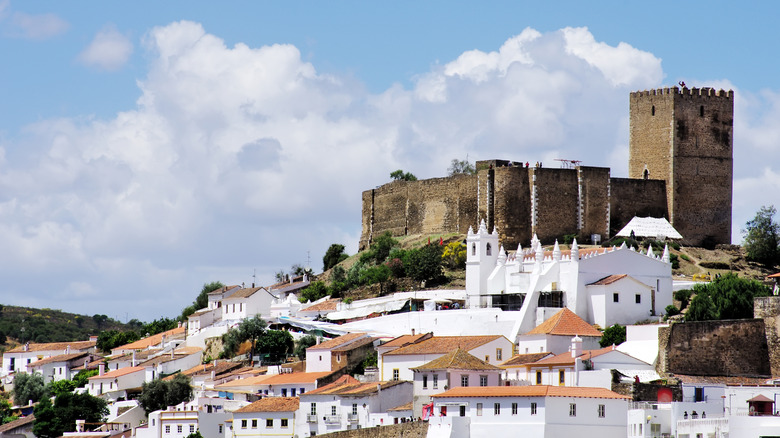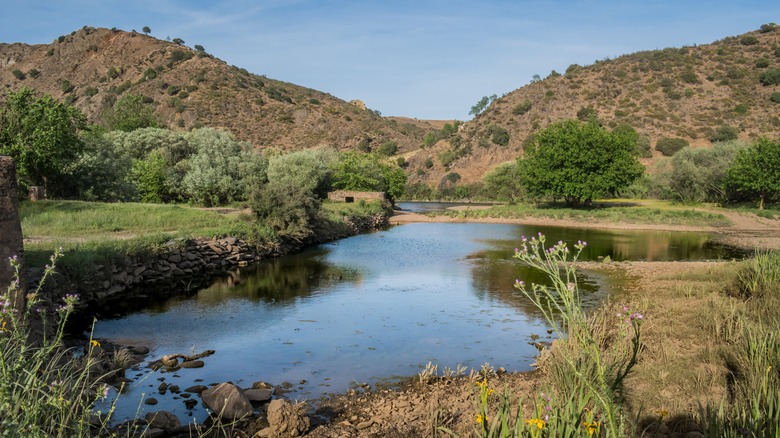This Often Overlooked City In Portugal Is A Relaxing Step Back In Time
In recent years, Portugal has made a name for itself as one of the best European countries for retirees and a paradise for laptop-toting digital nomads. Newcomers flocking to the nation can often be found in big cities such as Lisbon and coastal regions like The Algarve, but away from these popular destinations are hidden gems waiting to be discovered.
For an authentic glimpse at Portuguese history, head to Mértola, a town in the Beja district situated a short drive away from the Spanish border. At first glance, the town may look like many others in the Iberian country — there are blocks of white buildings with their signature red roofs, cobblestone streets, and picturesque hills in the distance. Beyond these familiar Portuguese sights, however, lies a rich and complex history.
Mértola was originally a Roman settlement until it fell into Arab ownership, even becoming the capital of the Arab kingdom. Other groups are said to have also inhabited the town throughout its history, including Phoenicians and Carthaginians until the Portuguese Christians finally overtook the area in the 1200s. Today, the municipality, spanning nearly 1,300 square kilometers, is home to just 6,175 residents after having lost much of its population in the 1960s. As a result, Mértola feels frozen in time, with medieval streets and ancient buildings that reflect the small town's distinct past.
Where to experience Mértola's history
If you stroll through the city center of Mértola, you'll notice nods to the town's history, from the statue of Ibn Qasi (the city's ruler between 1144 and 1150) to the old preserved cemeteries. But to really understand the sights and experiences of Mértola's inhabitants, make time to visit the castle, which dates back to the 10th century (the structure was rebuilt once in the 13th century and then renovated in the 20th century). The castle, now recognized as a National Monument, houses informative exhibitions and offers stunning views of the entire town.
When you visit the castle, be sure to stop by the adjoining museum, home to several artifacts discovered in the castle and within the town. You'll also find numerous other museum units in Mértola's historical city center, including the Alcáçova and Islamic House, the Miner's House, and Mother Church (which has served as both a Christian church and an Islamic mosque during its long history).
Mértola has so many ancient sites and off-the-beaten-path gems, it's easy to get overwhelmed. Thankfully, the Municipality of Mértola introduced a local tour guide program to help tourists get to know the area more intimately. The city also offers weaving workshops for visitors interested in learning one of the town's most beloved traditional crafts.
Mértola is a nature lover's dream
Mértola's position far from Portugal's big cities and surfable beaches might make it easy to overlook, but the region is bursting with striking natural beauty. In fact, Mértola's Guadiana River is a major reason for the town's varied settlements and inhabitants over the years. The river, one of the longest in the Iberian Peninsula, passes through Mértola before splitting Portugal and Spain and eventually connecting to the Atlantic Ocean. Given this location, Mértola's river port thrived in its earliest days, allowing for trade with nearby kingdoms and communities. While the Guadiana River may look a bit different today, you can still enjoy this natural resource by renting a canoe or boat and taking in the view of the town from the water.
Mértola's historical center is also just a stone's throw away from Guadiana Valley Natural Park, a protected area containing waterfalls, hiking trails, and plenty of flourishing greenery (look for the lucky four-leaf clovers that grow in the park). Guadiana Valley Natural Park makes for the perfect getaway when you're craving outdoor activities and relaxing time in nature. Like the town of Mértola, though, you'll find remnants of the past if you look closely enough. Try to find the park's prehistoric remains hidden among the hilly landscape and breathtaking wildlife.


